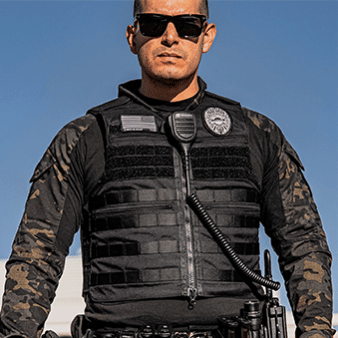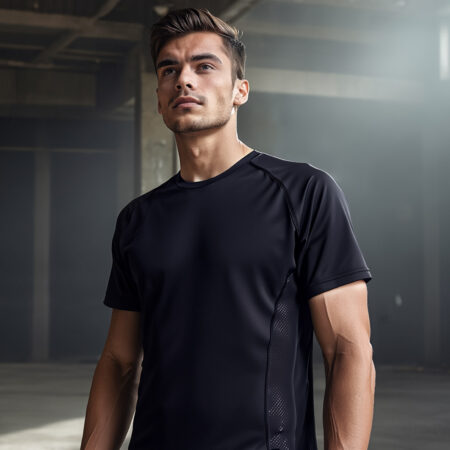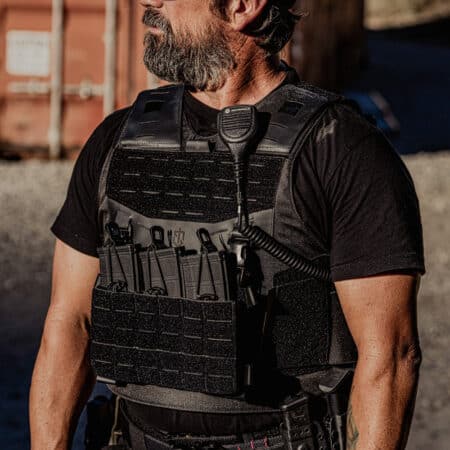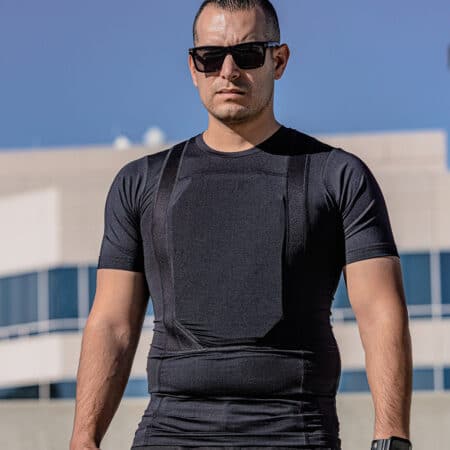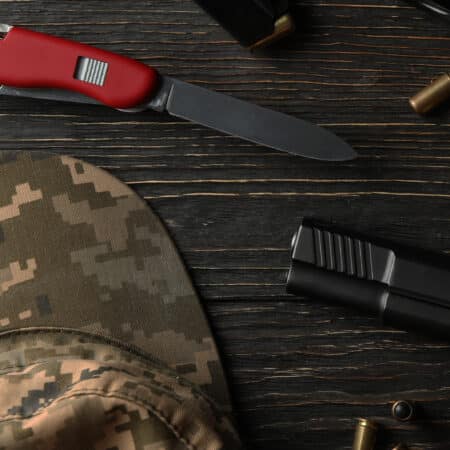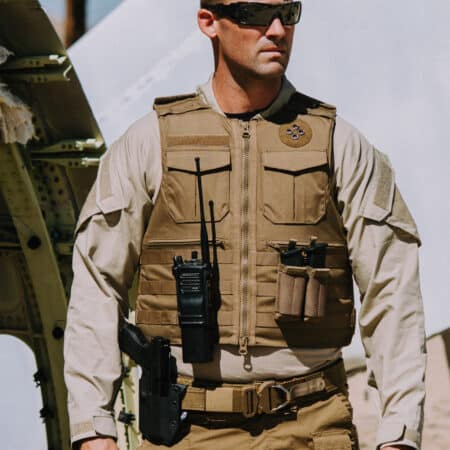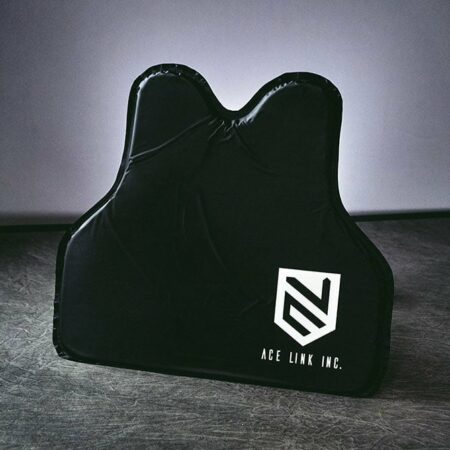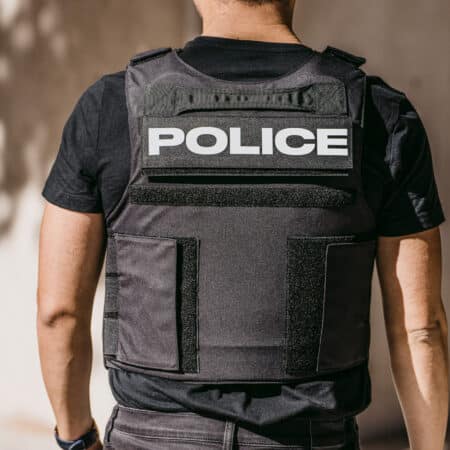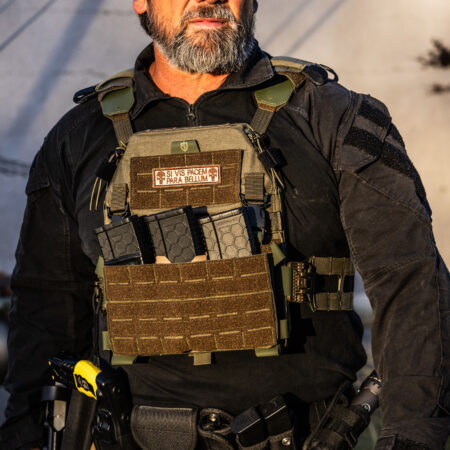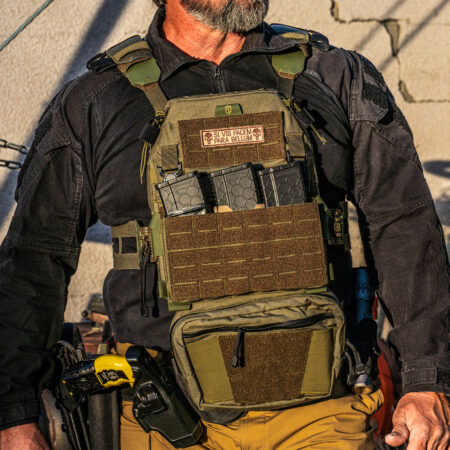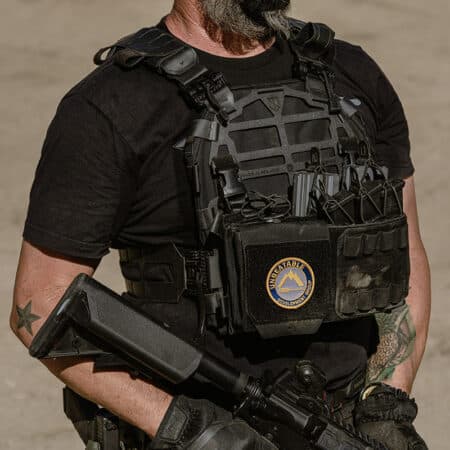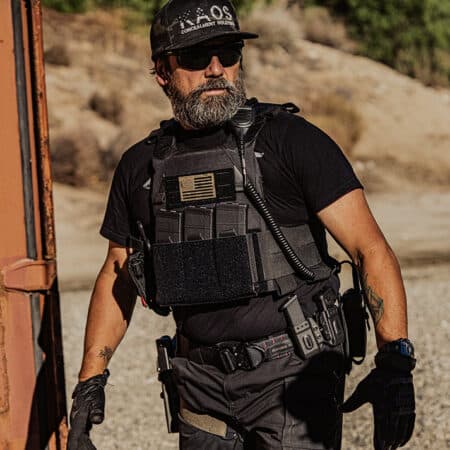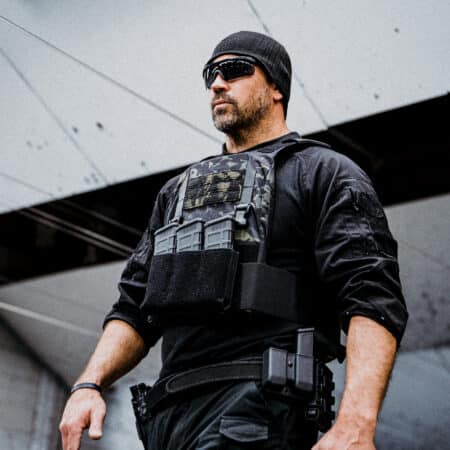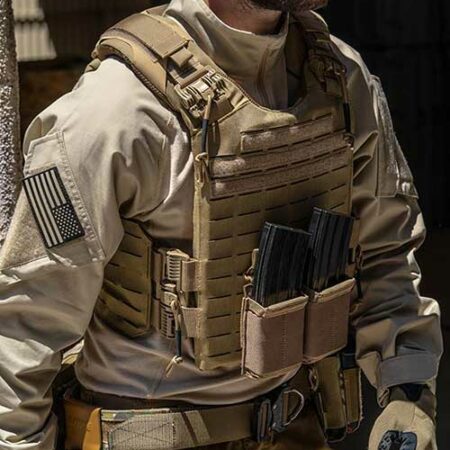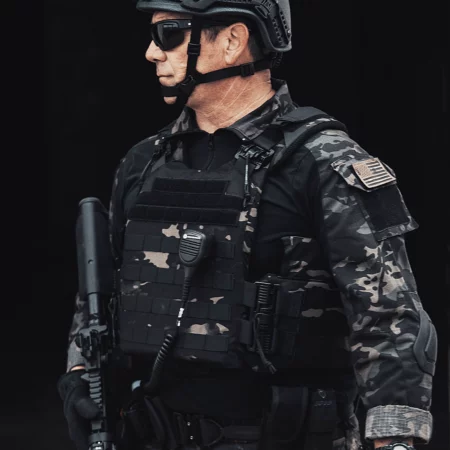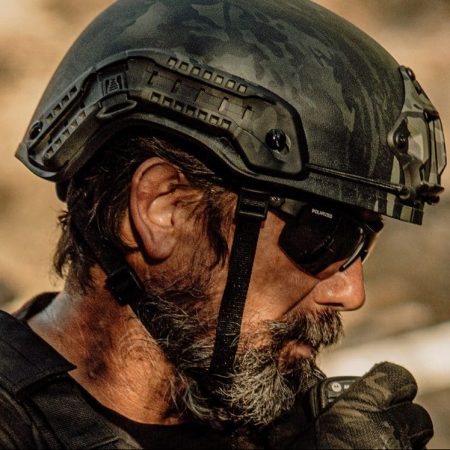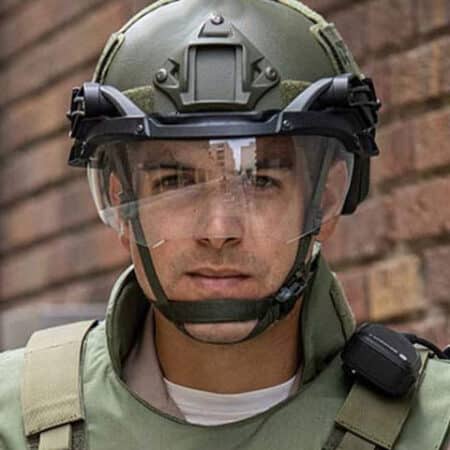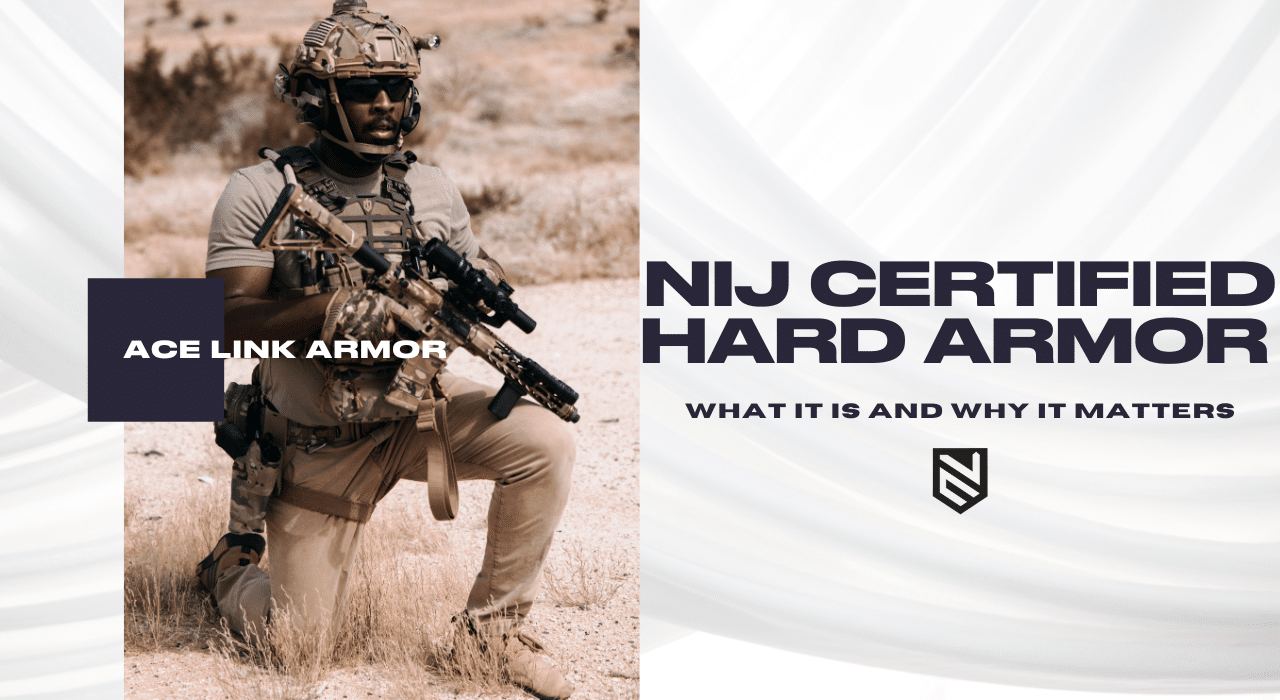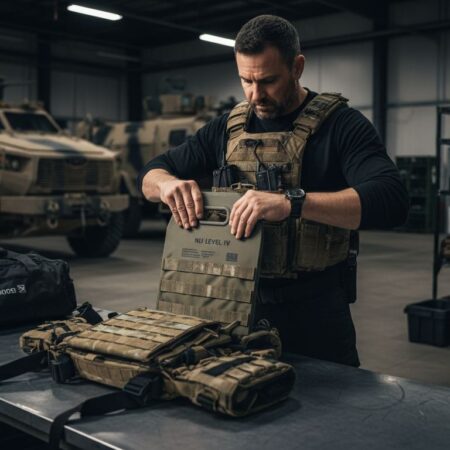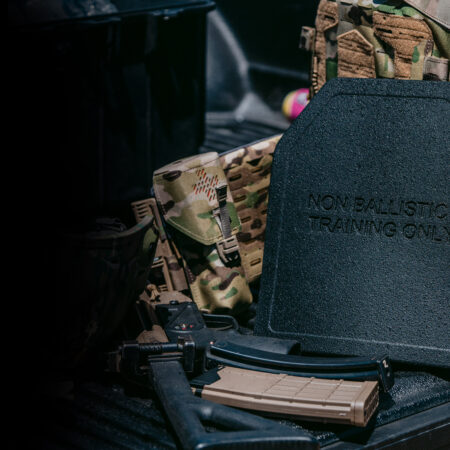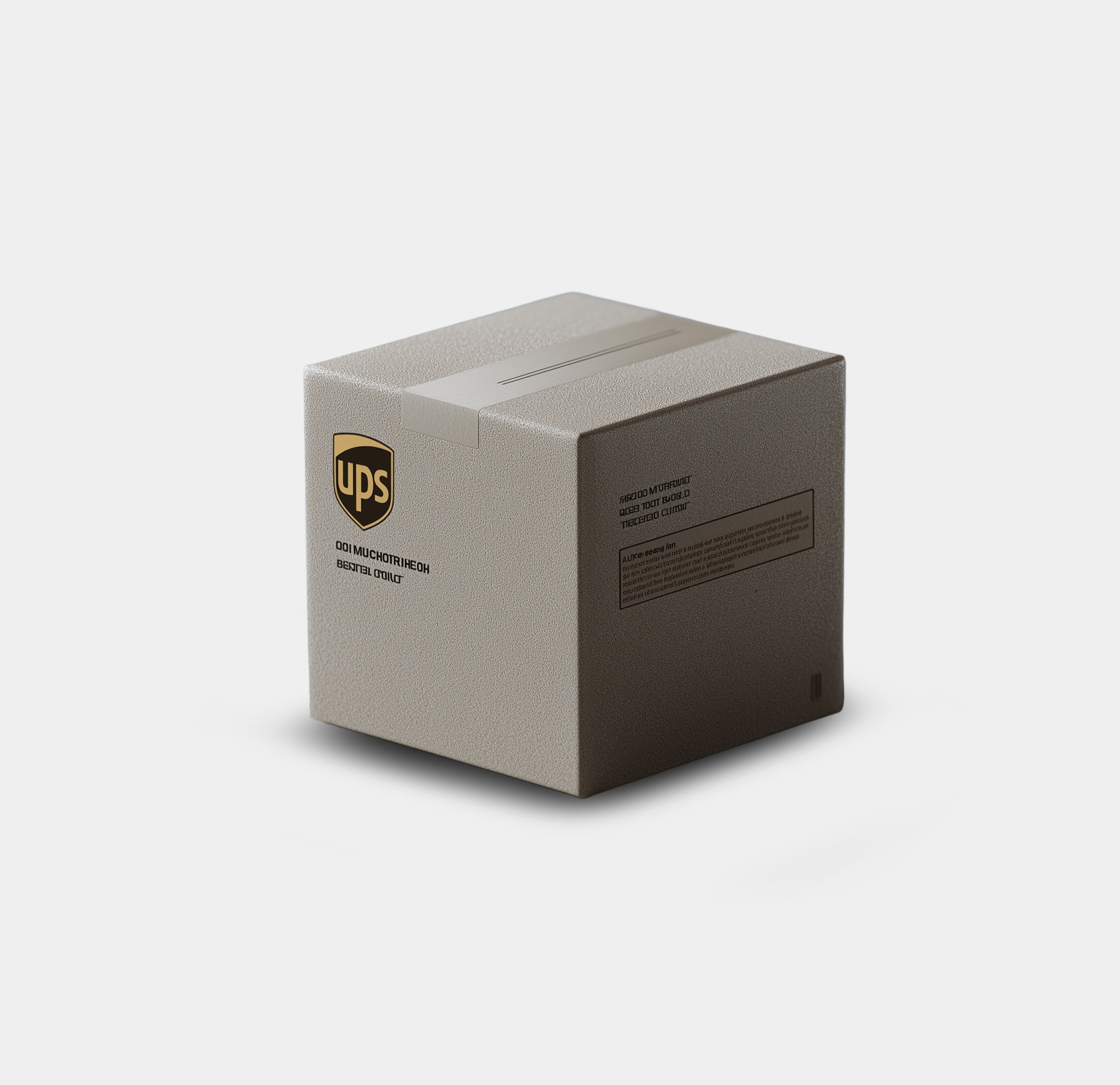Body armor is a wide term that encapsulates several kinds of protective gear. From ballistic vests and stab vests to hard armor plates, ballistic helmets, and other forms of riot gear, various types of body armor are made from distinct materials, using intricate manufacturing processes. Today we will talk about NIJ-Certified hard Armor plates, and help you understand the basics of how these plates are made and tested, and what threats they can protect against.
Defining Hard Armor:
So, let’s start with a general definition of hard armor plates. As the name suggests, these plates have a rigid design and are typically made from hard materials like steel, ceramics, and Ultra High Molecular Weight Polyethylene. These hard armor plates are designed to stop high-velocity projectiles, especially bullets fired from rifles.
When integrated into an armor system, these plates can offer reliable multi-hit protection against high-velocity projectiles. They work by dispersing the impact force of a bullet over a larger surface area.
These plates come in multiple shapes and offer varying levels of ballistic protection. They are a crucial element for defense against ballistic threats in Law enforcement, and civilian applications.
Importance of NIJ Certified hard armor:
When you buy a hard armor plate that you intend to use for protection in a potentially life-threatening situation, how can you be certain that it will work? Well, this is where the NIJ comes in.
The NIJ or the National Institute of Justice is the R&D branch of the US Department of Justice. They are responsible for setting the quality and testing standards for body armor in the United States.
They have created a standardized testing procedure for body armor, which checks the ballistic protection capabilities of the body armor, and if any armor product passes these tests, the NIJ gives them a certification.
Therefore, you can trust and use NIJ-certified armor plates in any application with complete peace of mind. With an NIJ-certified armor plate, you know the limits of your armor. You know which calibers it will stop and which calibers it won’t, which helps you tailor your gear to the threats you are likely to face. In our blog article we are also debunking myths about NIJ certified armor – read more about it!
The Certification Process of NIJ Certified Hard Armor:
The National Institute of Justice has a very intricate method for testing body armor. They do various tests and analyze the effectiveness of the armor with various parameters designed to push the armor to its limits. Though the complete NIJ Certification process is much more complex and detailed, here is a quick overview of the steps involved in the NIJ certification process.
Step #1: Documentation and Applications:
To start the process, the manufacturers submit their armor samples along with detailed documentation about the design, construction, and materials of their armor plates.
Step#2: Pre-Test Inspection and Sampling:
Next, the samples provided by the manufacturer are inspected for quality assurance and checked for defects. Specific samples are then selected for testing, one batch of which is tested in a brand new state, and another is set for conditioning.
Step#3: Ballistic Testing:
This is the step where the testers shoot at the armor plates with standard ammunition fired at specified velocities, from a set distance. The armor plates have to survive six shots, without penetration or excessive backface deformation.
Step#4: Environmental Testing:
At this step, the samples selected for conditioned testing are exposed to environmental factors like moisture, high temperature, and movement. The goal is to simulate used body armor plates.
Step #5: Testing of Conditioned Samples:
In this step, the testers shoot the conditioned armor panels with the same standard cartridges used for the testing of brand-new armor plates.
Step #6: Post-test inspection:
After the testing process is complete, both the new, and conditioned samples are inspected, and measurements are taken to analyze the backface deformation and bullet penetration.
Step #7: Documentation Review:
The data collected from the testing is documented at this point, and compared with the standards of the NIJ to see if the armor can be certified.
Step #8: Certification and continued Compliance:
If the armor passes all tests and reviews according to the specified standards of its protection level, the manufacturer receives an NIJ certification. The certified armor is then subjected to continuous random testing by the NIJ to make sure that it complies with their standards. If an armor manufacturer drops their quality standards, their certification can be revoked.
The NIJ also lists its certified armor product on the Compliance List. Law enforcement agencies and individuals can use this list as a trusted reference point for armor products tested and verified as compliant with NIJ standards.
So, here is a quick overview of the NIJ certification process, however, you can read more about it in detail here.

LEVEL 3++ NIJ CERTIFIED HARD ARMOR PLATE
Level 3++ NIJ CERTIFIED Armor Plate with Swimmers Cut: Offers specialized body armor designed for enhanced maneuverability and comfort. Swimmers Cut design reduces bulkiness around the shoulders, allowing for unrestricted arm movement during critical operations.
Advanced Level 3++ Protection: Swimmers Cut 10×12 Armor Plate offers advanced ballistic protection, meeting and surpassing Level 3 standards. These plates are specially designed to defend against a wide range of rifle-caliber threats, including 6 shots :7.62 x 39mm M67; 7.62 x 39mm MSC; SS109 / M855; 5.56 × 45mm; 5.56 x 45mm M193 and other high-velocity projectiles.
Ballistic Performance: The armor plate meets the standards set by the National Institute of Justice (NIJ), specifically NIJ 0101.06. This indicates that the plate provides a specified level of protection against various ballistic threats at a specified velocity.
Types of Threats Addressed by NIJ Certified Hard Armor:
NIJ- Hard Armor Plates are designed to stop high-velocity rifle rounds. Depending on their protection level, they can stop a wide range of calibers. However, they don’t only stop rifle rounds.
Hard armor plates can also stop:
- All pistol calibers,
- Shrapnel,
- Stabbing attacks,
- Blunt force attacks
However, the main focus of these plates is still to protect against bullets, especially high-velocity rifle rounds. We will discuss the specific threats different levels of hard armor plates can protect against in the next section.
Comparing protection levels of NIJ Certified Armor:
The National Institute of Justice has specified 5 different threat levels for body armor in general, however, hard armor plates are only made for higher levels of protection. These are:
- Level IIIA
- Level III
- Level IV
However, some manufacturers also offer level III+ special threat armor plates. These plates are tested to exceed level III protection and offer protection against more calibers, however, there is no official protection level specified by the current NIJ standards for them.
So, let’s compare all of these protection levels and see what they can protect against. You can also read a separate article we prepared about NIJ protection levels.
Level IIIA:
These armor plates are usually made from UHMWPE, and it is the only level of ballistic protection that is available in the form of both soft armor panels and hard armor plates.
the NIJ used .44 Magnum and .357 SIG Cartridges to test Level IIIA armor plates. However, they can protect against most pistol rounds.
A level IIIA plate will stop:
- .40 S$W
- 9mm Luger
- .45 ACP
- 10mm Auto
- .38 Special
- .357 Magnum
- .44 Magnum
A level IIIA plate will not stop:
- Rifle rounds
- Some large handgun calibers like 500 Magnum and .50 AE
Level III:
Level III Armor plates can be made from a wide range of materials. According to the NIJ standards, they have to stop multiple hits from 7.62 x 51 NATO or .308 Winchester rifle rounds, however, they can stop most intermediate rifle rounds like the ones mentioned below.
A level III plate will stop:
- All pistol calibers, including large handgun calibers
- 5.56 x 45 mm NATO (AR-15 rounds)
- 7.62 x 39 mm (AK-47/AKM rounds)
- 5.45 x 39 mm (AK-74/AK-100 series rounds)
- 7.62 x 51 NATO or .308 Winchester
A level III plate will not stop:
- Calibers larger than 7.62 x 51 NATO or .308 Winchester
- 5.56 x 51mm NATO green tip extreme penetrator rounds.
Level III+ (Special Threat):
Level III+ isnt an official protection level recognized by the NIJ, however, they offer superior protection to level III plates. Apart from stopping everything that level III plates can stop, these plates can also stop 5.56 x 51mm Nato green tip extreme penetrator rounds.
A level III+ Special Threat plate will stop:
- All pistol calibers, including large handgun calibers
- All calibers that level III plates stop
- 5.56 x 51mm NATO green tip extreme penetrator rounds.
A level III+ Special Threat plate will not stop:
- Calibers larger than 7.62 x 51 NATO or .308 Winchester
- Armor Penetrating rounds
Level IV:
The NIJ has specified Level IV as is the highest level of ballistic protection. These plates usually have a composite construction, which consists of a ceramic strike face, with a PE or steel backing.
A level IV plate will stop:
- All pistol calibers, including large handgun calibers
- All calibers that level III and III+ plates stop
- 7.62x51mm NATO Black Tip (Armor Penetrating) Rounds
- 30.06 mm Armor Penetrating rounds
- 7.62 x 54mmR
A level IV Special Threat plate will not stop:
- Calibers larger than 30.06 mm Armor Penetrating rounds
- .338 Lapua magnum
- .50 BMG
Product Comparison NIJ certified vs. tested
Common Misconceptions about NIJ Certified Hard Armor:
Lastly, to understand the basics of Nij Certified hard body armor, it is important to stay away from misinformation. There are several prevalent myths about hard armor plates, and we will try to debunk some of the most prominent ones here.
Myth #1: NIJ Certification is a Mere Formality:
Many manufacturers who are trying to promote cheaper body armor usually say that NIJ certifications are just a formality, and they personally test their armor plates to standards similar to or superior to those of the NIJ.
Well, while independent lab testing is valid and proves quality, there is no substitute or other certification for body armor other than the NIJ.
So, an NIJ Certification isn’t just a formality. You can be certain that NIJ-certified plates have gone through strict testing and quality control, and they won’t fail you when you need them to protect your life.
Myth#2: Higher levels of NIJ Protection are always better:
Though higher NIJ levels indeed offer protection against larger calibers, they may not be suited for every position.
The higher the level of protection, the heavier and more expensive a plate tends to be, and if you aren’t expecting large caliber threats, then the added weight and bulkiness of high-level plats may only act as a hindrance, rather than improving your combat effectiveness.
This is why many law enforcement officers only use level IIIA soft armor vests. The Military and Special police tactical units use Hard plates as they are more likely to face rifle threats. Similarly, you should also consider the situations you expect to need body armor and buy the right kind of armor for your specific needs. Read more about how to choose the right level of ballistic protection here.
Myth #3: Once NIJ Certified, the plates are always considered NIJ certified:
An NIJ Certification for any armor plate is only valid as long as the guaranteed lifespan of the armor is. For most armor plates this can be around 5 to 7 years. Over time, armor plats can deteriorate, especially if they are used regularly, and their protective capabilities can diminish, this is why it is important to regularly inspect your armor plates for damage and replace them after the manufacturer’s recommended lifespan.
Also, as the technology regarding armor keeps improving, the NIJ can update its testing standards. Therefore, a plate that is NOT certified now, won’t be considered NIJ certified after the standards are updated. For instance, though the NIJ 0101.06 standard is still prevalent in the market, the NIJ updated its standards back in 2018, with the NIJ 0101.07 standard that will eventually phase out the testing procedures according to older standards.


